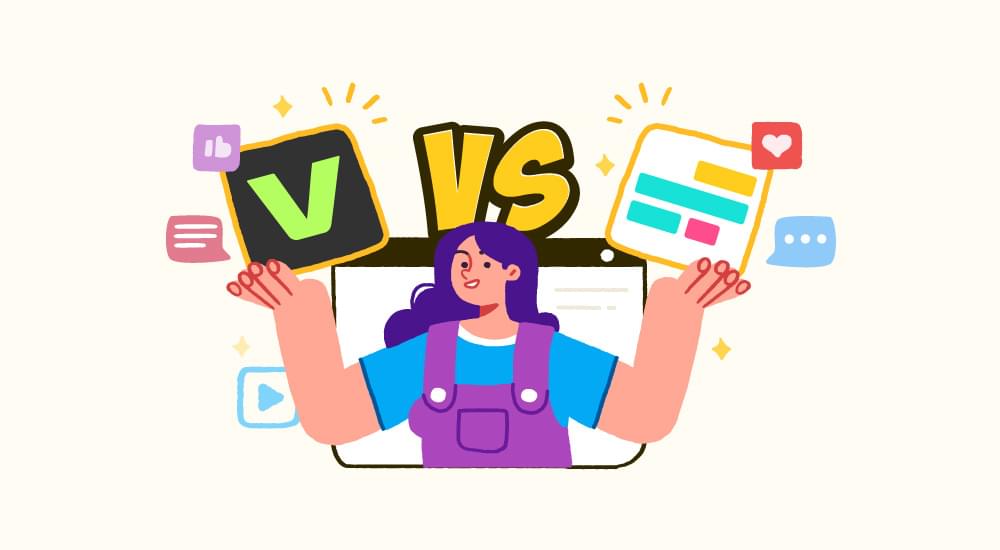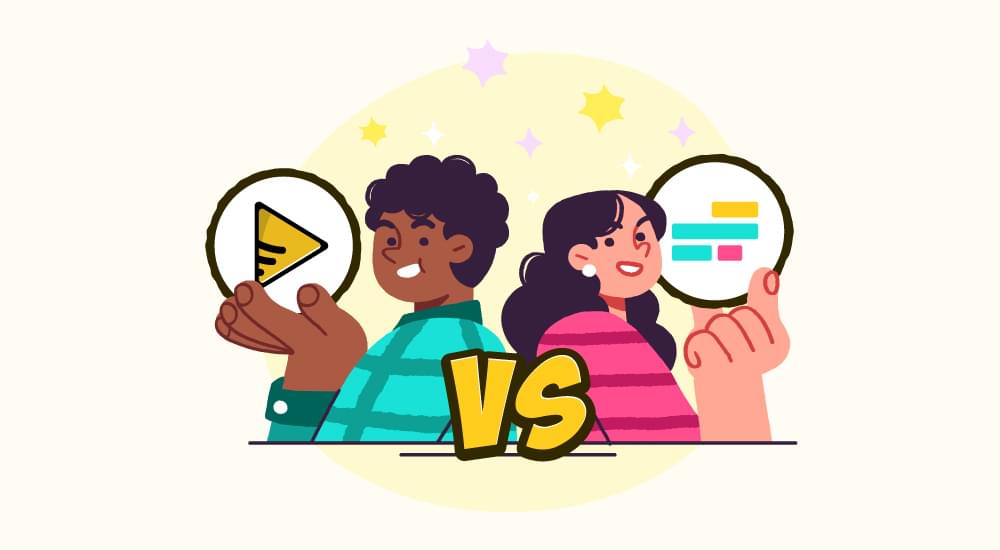
history of video subtitles
Learn The Difference Between Subtitles And Captions
Most people use the words’ subtitle’ and ‘caption’ interchangeably, but did you know they are not the same? They may appear to be identical, but subtitles and captions have different uses. Although both display text on the screen, they are not synonymous and are very different in terms of both purpose and definition.
The captions displayed on the screen are for those who are deaf or may have difficulty in hearing. It comprises both speech and non-speech elements in the video, such as door slams, coughs, dogs barking, shattering of glass, wooden floor creaking, etc. Captions are text versions of the spoken parts and sounds in the videos, all in the same language medium. Captions ensure that all essential audio, including non-speech sounds in the video, is understandable for the person watching.
Subtitles are for viewers who can hear but cannot understand the video’s language. It is the translated text version of the video and is used to aid the viewers in understanding the spoken language and the conversation heard on screen. We mostly see them in foreign movies and dramas as translated sentences that enable the viewers to understand and relate to the content of the video.
Advantages Of Using Subtitles And Captions To Your Video
There are many benefits and advantages to using subtitles and captions on your multimedia. Both allow the viewers to learn the new language faster and, at the same time while helping to improve one’s literacy rate at the same time. It increases the chance of video engagement and paves ways for easier access to other cultures all around the world.
So, what is indeed the difference between subtitles and captions, and how are they used separately? Below you can read the different usage of captions and subtitles.
- Captions were first introduced in the early 1970s to accommodate deaf people or those having difficulty in hearing. Captions became a mandate for broadcast televisions in the US by the 1980s and has been a part of the Americans with Disability Act (ADA) ever since the 1990s There are over 28 million American adults who are deaf and experience hearing problems. To prevent discrimination against people with disabilities. The Americans with Disabilities Act (ADA), Section 504 and 508 of the Rehabilitation Act, the FCC’s CVAA, and the international Web Content Accessibility Guidelines (WCAG 2.0) all require captions for multimedia, these laws and guidelines have been in effect across government, entertainment, education and even on the field of business.
- The Word captions come from the word to take/seize/capture and metaphorically capture the meaning of the video or image and turn it into tangible meaning instead. Captions comes in two different forms “open captions” and “closed captions” where the latter allows the viewers to turn the captions on and off. In contrast, open captions are part of the video itself and can viewers cannot turn them off.
- Subtitles have been serving the foreign audience ever since the 1930s who could not understand the language used in films. We also used subtitles when silent films were being transitioned into videos with spoken audio. The word subtitle comes from the Latin word ‘sub’, which means under or beneath, and ‘title’ meaning inscription, heading, label. Subtitles try to bridge the gap between foreign audiences by assuming viewers do not share the same language used in videos.. It translates the audio dialogues in the video from one language to another and presents it as reading texts on screen.
- Captions are useful for a variety of reasons and and its benefits are not only limited to people with disabilities. It allows individuals to follow and understand the content of a video when audio is not clearly heard in noisy environments such as crowds or near teleportation services, or even in locations where you have to lower the sound considerably such as in hospitals and clinic. Captions are also useful for multimedia marketers since they allow the audience to understand videos that automatically play on their social media feeds, with default silent mode.

Why Companies Invest in Captions and Subtitles
Seizing new audiences is a foundation of trading success. With captions, you turn viewers into your loyal audience, who normally cannot fully comprehend videos because of their hearing impairments. You further attract viewers who have had difficulty in processing or hearing speech elements in the media. Subtitles can help you garner a large customer base by helping you present video contents to audiences all around the world who understand different languages.
- On YouTube, 80% of the views originate from outside the US. Businesses that can enter a portion of the online population who speak a language other than English will receive the best results on their video investment. The entertainment industry primarily avails from this, with several top foreign films earning prestigious awards in Hollywood and several television shows accumulating global reputation.
- Captions and subtitles also increase viewer engagement. Videos with captions sustain a 40% head in viewing, and videos with both captions and subtitles undergo an 80% increase in viewing. Private examinations at Facebook discovered that captioned video ads noticed a 12% increase in engagement. This engagement drives another significant advantage of captions and subtitles, that is the SEO. Search engines compensate for quality content, and likes, shares, comments, and retweets all signals to search engines that you are producing quality content.
- Even more relevant is the part played by subtitles and closed caption data during SEO. Your media’s text transcriptions enable search engines to crawl the actual content in your videos, not just the title and description tags, and index the video accordingly. It makes your videos more easily discoverable, which establishes increased influence and also improved viewer engagement.
- Subtitles have resulted from globalization. With growing businesses, trends, and different media publications, we developed subtitles to allow the availability of different multimedia options to the worldwide audience who do not speak or understand the language medium used in the published media contents. Subtitles enable viewers to have easier access to the various cultures around the world. It also helps to boost help boost search engine optimization (SEO) for content and aids in improving engagement towards the audience. Approximately, 91% of videos with subtitles reach viewers and have better engagement than videos without subtitles.
- Companies are investing in captions as a tool for their multimedia because it adds viewers to their audiences who who in ordinary circumstances cannot understand the content of the video because of hearing difficulties. It also adds viewers who might have trouble and difficulty in processing auditory or speech components in a video aside from the large population of foreign language English speakers.
Free And Easy Ways To Generate Your Subtitles And Captions
With the growth of multiple online video platforms and the extent of video-capable smartphones, we’re now creating we’re now creating more and more videos each day for a vastly growing audience. Subtitles are commonly used to translate language from one medium to another, such as articulated English to written English or one language to another. They’re a brilliant method for making videos more accessible to different linguistic audiences.

YouTube’s Free Captioning Feature
YouTube’s generating subtitles features are up to speed with the current multimedia sphere . There is an automatic generation of transcript in the video, which is also editable in the Video Manager. Although the service appears to be continuously developing, YouTube’s transcription is spectacular and often hilariously deficient at the same time. Fortunately, you have the choice to adjust them manually. Choose the Subtitles & CC option to view the subtitle settings, and then tick on the subtitle file you desire to change. There are other difficulties with YouTube’s service.
For one, its speech recognition may not interpret your accent or low voice correctly. Also, softwares don’t really make people speak louder, pronounce better, or even force them to use good filming equipment for better voice recordings.
By Using Subtitling And Captioning Tools
With the advancement of technology, subtitling and captioning has never been this easy.. People can choose to use Automatic Video Subtitling and Captioning Tool like SubtitleBee, free of cost. It has proven to be quite helpful by generating almost a hundred percent accurate text from the spoken language, and you have options to edit and stylize your subtitle or caption fonts and colors.
By Hiring Subtitling Service Companies some people are really particular with details. That is why they prefer hiring an agency or, nowadays, freelancers to do the tedious task of subtitling or captioning their videos This might be a great option for those who are creating educational videos, or how-to guides, as it will help them be more accurate with details and instruction. Plus, difficult accents, terms are often more easily distinguished and interpretable by humans compared to machines and software.
Final Thoughts
Subtitles allow more opportunities for Globalization to happen. It will enable more engagement and provide a more effortless way to gain knowledge about the different cultures across the globe. In addition, subtitles are not only used to help you understand a foreign film but also benefit individuals trying to learn a new language. In research, a subtitle is a useful tool in improving one’s comprehension. Despite their differences, both caption and subtitles have the same goal: enable viewers or audiences to have better access and a better understanding of the multimedia content and thus extend the video’s engagement to a much wider audience.
Add and translate your subtitles to more than 100 languages with high accuracy












